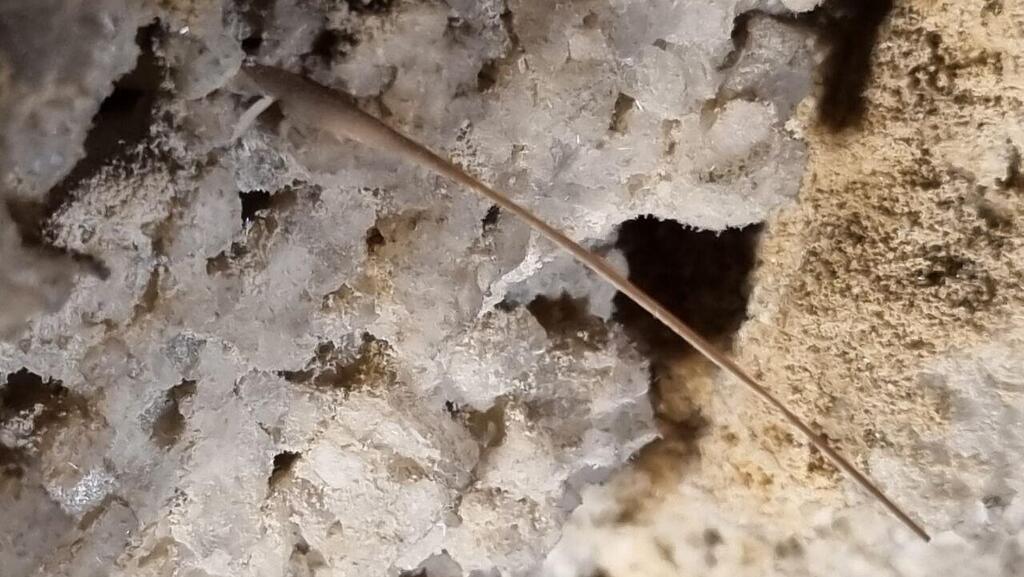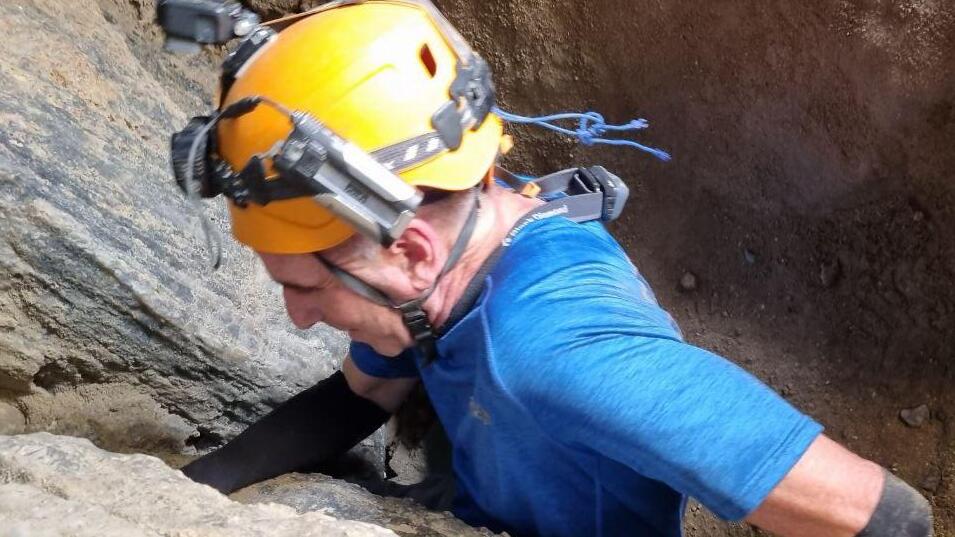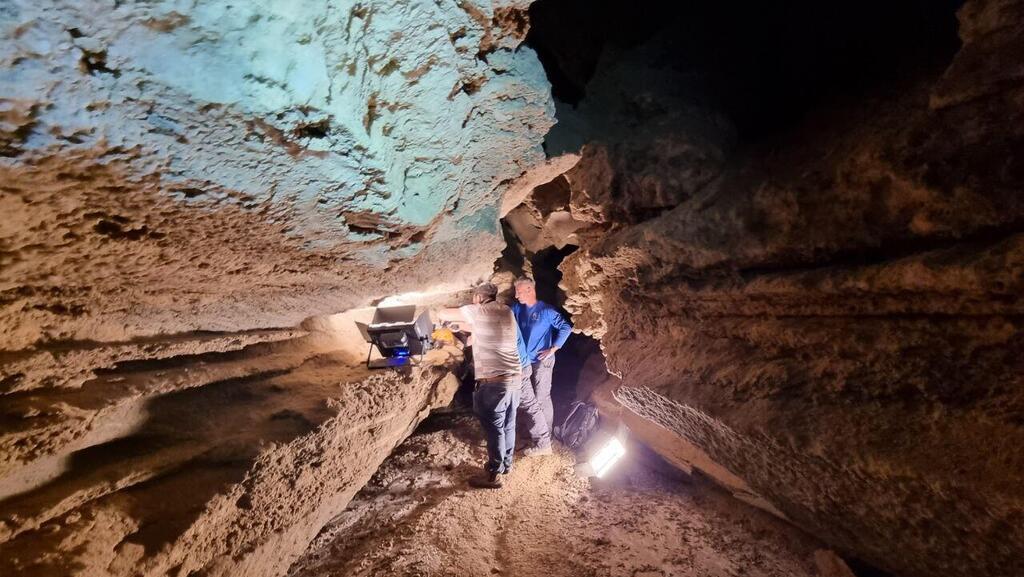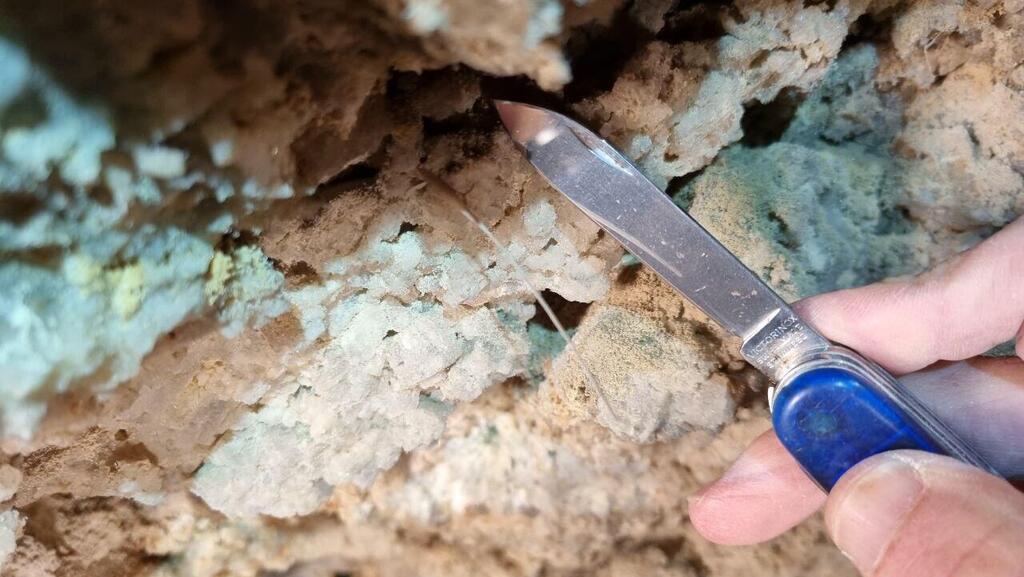Getting your Trinity Audio player ready...
After a phone call from Shlomi Lobaton, a cave expert and tour guide who identified a "strange plant" in the depths of a cave near the Dead Sea, the prior knowledge of scientists on photosynthesis was put to question, prompting a broad interest.
Photosynthesis, a process used by plants and other organisms to convert light energy into chemical energy, assumes that plants need light in order to thrive.
"I saw a tiny stalk of a plant coming out of one of the cracks deep in a salt cave in Mount Sodom," says Lobaton.
Intrigued, he invited Prof. Zach Adam - a senior and internationally renowned botanist from the Hebrew University of Jerusalem - to join him on the journey to the depths of the salt caves.
Equipped with helmets, head-lamps, and cameras, they crawled into the narrow cave. After some intensive crawling, they found themselves in a large space with remains of a wooden cabin, which Lobaton explained used to belong to the Dead Sea workers who operated there decades ago - before the cave's opening collapsed due to the decreasing sea levels.
Surrounded by bats, Lobaton said that during one of his weekly guided tours to this cave, he stumbled upon a plant emerging from one of the walls.
"I thought it had been swept away by the flood or something," he says. I pulled at it and then I feel the 'tuck,' as it would be if it was sprouted to the stone. I called people from the field of science, no one knew what it was, no one had heard of it. They told me I was hallucinating."
We then continued to crawl deeper into the cave, going through an even narrower passage to get to the next open space.
Though we were physically exhausted by this point, the beautiful sight of the depths of the cave took our breath away.
Lobaton began to sweep the cave's walls for the plant he had encountered before. After some searching, he shouted "I found it!" We all rushed toward him to see where his flashlight was pointing.
And indeed, in a small crack in the wall, a tiny stem could be seen popping out.
"If I were to tell a colleague that I was deep in a salt cave, investigating the possibility of a plant growing inside of a cave, he would have thought that with age I had completely lost my mind," Prof. Adam says.
The narrow crack from which the tiny stem emerges is full of salt and shiny quartz crystals, what looks like toxic and hostile soil. However, Prof. Adam reassured that there are many organisms that thrive in salt-concentrated environments. "But the fact that there is no light means there is no way for the plant to undergo photosynthesis in a cage, and live in complete darkness," he says.
As Prof. Adam took out his Swiss army knife to cut a the sample, Lobaton suddenly found a voluminous cluster of additional stems, and a moment of celebration ensued.
5 View gallery
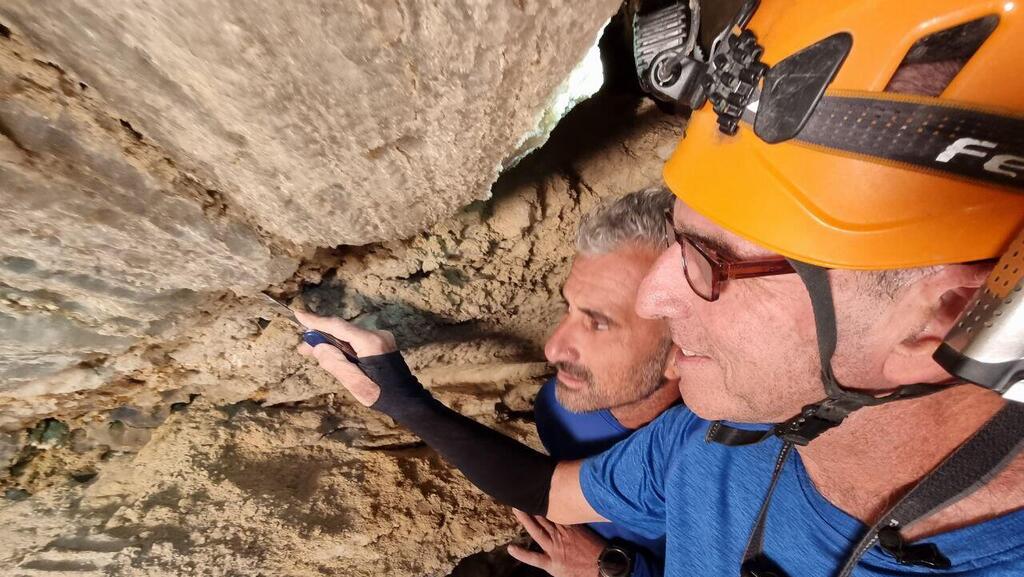

Up-close look at the strange plant found in the salt cave near the Dead Sea
(Photo: Assaf Kamar)
The professor was left at a loss of words, and went on to take a sample of the finding, which he said would make its way to the university's lab at the Faculty of Agriculture in Rehovot.
Stay tuned to discover what the botanic experts will have to say about the small stem of the salt caves.


